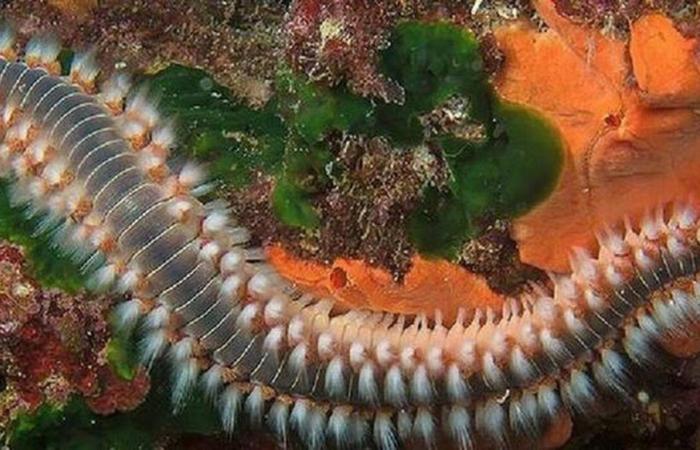“There Puglia records a population of worm dog in expansion”. This is stated by Lucrezia Cilenti, researcher of Cnr Ispa Foggia. The so-called “fire worms” are colorful and carnivorous, on average between twenty and thirty centimeters long, with stinging spines and, if fragmented, are capable of regenerating. They are marine worms that have stinging bristles. In recent years these unwanted organisms have multiplied in particular in the seas of Sicily, Puglia and Calabria.
How worm dogs behave
«The first sightings in Italy are very dated, they date back to 1835, on the east coast of Sicily – explains Lucrezia -. The presence of the vermocane is currently recorded along all the Italian coasts. In Puglia we are experiencing greater diffusion in very specific areas. Specifically, we are talking about Salento, especially the protected marine area of Porto Cesareo, and Gargano, particularly in the area of the Tremiti Islands. Accomplices of this proliferation are summer heat waves. It is undeniable that rising temperatures are contributing to significant impacts on Mediterranean biodiversity and community structure. This is because the warbler (Hermodice carunculata) is a thermophilic predatory polychaete, which prefers rocky substrates. And precisely the temperature, in addition to affecting reproduction and the rate of expansion of distribution in the Mediterranean, also seems to influence its rate of voracity. And, therefore – he continues – on its ingestion by some species of coral, such as the one commonly called “Astroides calycularis”. The optimal temperature, which increases the predation rate of the warbler on other species, is around 26°C.”
The very first population of vermocane in the expansion phase in Italy was detected precisely in Puglia. Over the last fifty years this growing trend has made further steps forward, as the CNR researcher explains, up to the present day, with a movement of this species further north than in the past, reaching the coasts of Sardinia , Tuscan Archipelago (Tyrrhenian Sea, Western Mediterranean Sea) and the northernmost Croatian islands (Adriatic Sea).
«Today we can say that we are faced with an invasive species, threatening especially in water, not only for the animals that live in marine natural reserves, including corals and gorgonians, but also for the work of fishermen – says Lucrezia Cilenti -. The multiple stress conditions, resulting from increasing temperatures, and biological competitions between alien and endemic species, represent a significant threat to biodiversity and key habitats in the Mediterranean Sea. Understanding these dynamics is fundamental to anticipate and mitigate potential impacts on local biodiversity, as well as to manage and conserve vulnerable species and habitats. Most reports of the presence of the worm in our seas come from fishermen who injure themselves during their activity or who find fish killed by these marine worms in their nets. We invite everyone not to stop reporting.”
The National Institute of Oceanography and Experimental Geophysics (OGS) has published a note on its official website. We read: “The specimens have a very bright colour. They should not be touched if spotted because their body is covered with bristles containing stinging toxins which can cause pain, burning, edema, itching and numbness.”
Monitoring plans are currently in place to understand its distribution and implement eradication measures. The OGS, in particular researchers working in the Sicilian offices of Panarea and Milazzo (Me), began working on vermocane as early as 2022, precisely at the push of the local fishermen community of Milazzo. Thus, the project entitled “Worms Out” was started (which also involves the Universities of Modena and Reggio Emilia, Catania and Messina, ISPRA, the Marine Protected Area of Capo Milazzo and ScubaBiology). The target? Collect ecological and biological data on the warbler, look for the best solutions to manage its presence and contain its proliferation. The project also counts on the collaboration of citizens. This is why, for anyone who spots a worm dog, the Ogs has created a special app to report its presence.
© ALL RIGHTS RESERVED
© ALL RIGHTS RESERVED
Read the full article at
Puglia Newspaper






